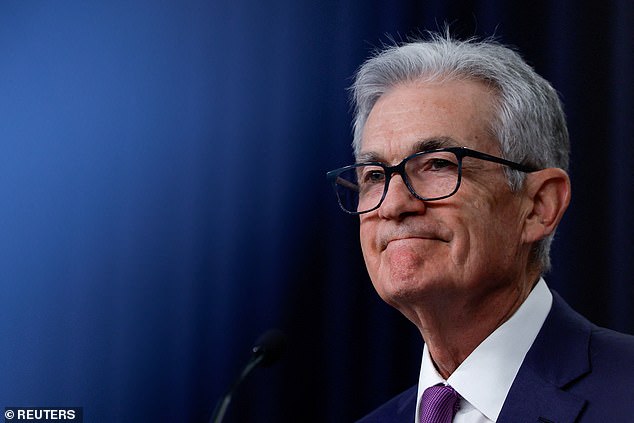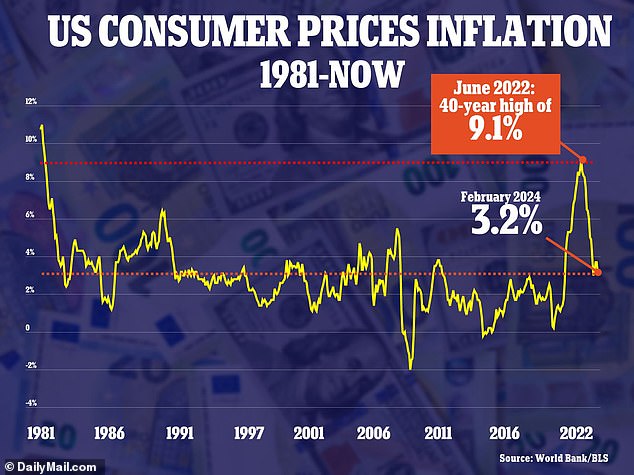- Annual inflation rose slightly to 3.2 percent in February from 3.2 percent
- The numbers remain well above the Federal Reserve’s 2 percent target
<!–
<!–
<!–
<!–
<!–
<!–
Inflation rose slightly to 3.2 percent in February as prices were pushed up by housing costs and gas.
Core prices, which exclude volatile goods such as food and energy, rose 0.4 percent from January.
Wall Street was mixed in premarket trading Tuesday ahead of the numbers released by the Bureau of Labor Statistics. Stock futures rose slightly after the report.
Tuesday’s data release showed inflation rose to 3.2 percent, up from 3.1 percent in January.
The numbers came in above Wall Street expectations of 3.1 percent and remain well above the Fed’s 2 percent target.
A month ago, a warmer-than-expected report on consumer-level inflation sent financial markets into a spin.

The inflation number plays a big role in whether the Federal Reserve will cut interest rates sooner rather than later. Pictured is its chairman Jerome Powell


Inflation rose slightly to 3.2 percent in February as prices were pushed up by housing costs and gas
Fed Chairman Jerome Powell said last week that the Fed is ‘not far’ from gaining enough confidence in inflation to start cutting interest rates.
Cuts in the Fed’s key interest rate, which is at its highest level since 2001, will ease pressure on the economy and the financial system, while lowering investment prices.
The general expectation among traders is that the Fed will begin cutting interest rates in June, and stock prices have been lifted by those expectations as well as signals that the economy remains remarkably robust.
Mohit Kumar, chief economist and strategist for Europe at Jefferies, said “the market is in wait-and-see mode” for Tuesday’s inflation numbers. He added that he expects a first cut from the Fed in June, in line with the markets.
“An inline or weaker print would reinforce our view of the June cut and be welcomed by the markets,” he said.
Markets aren’t pricing in a Fed rate cut at next week’s meeting, but a more than 60 percent chance of one in June, the CME FedWatch Tool showed.
